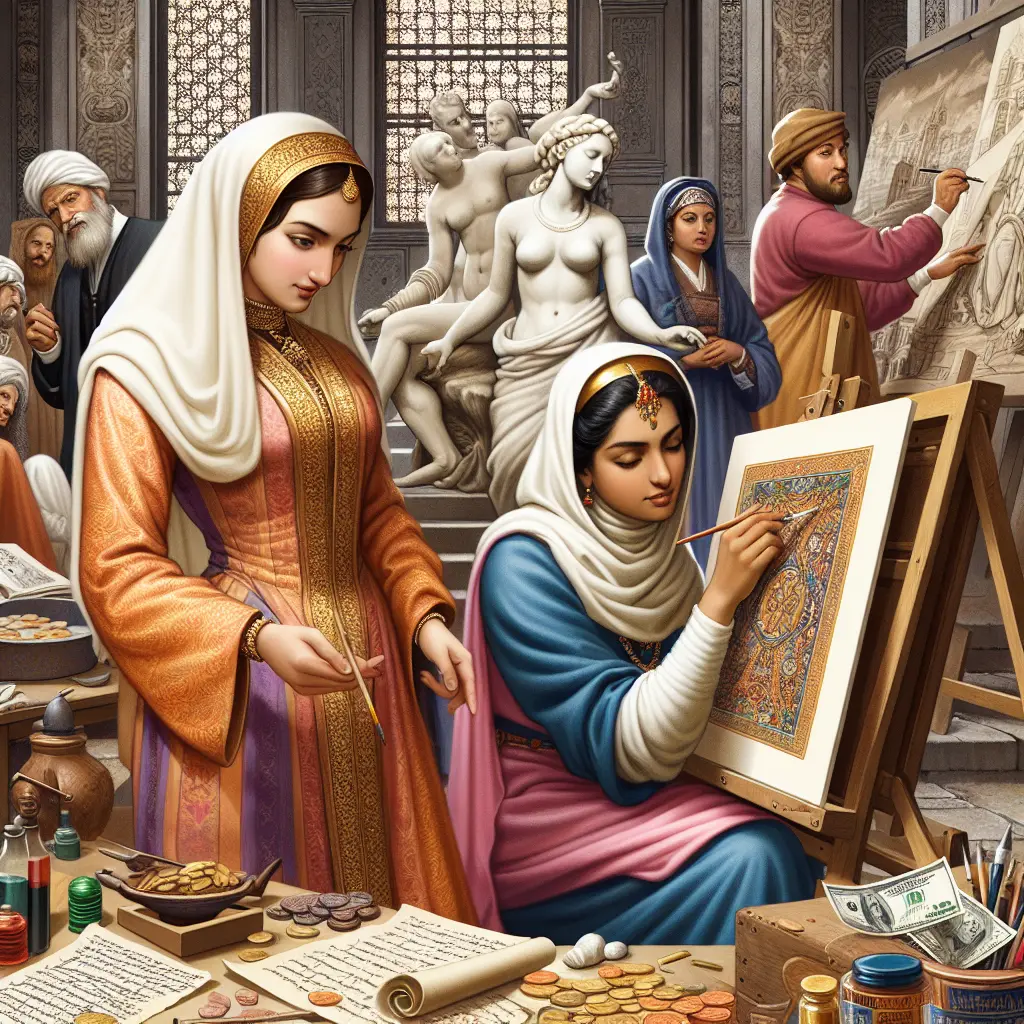
Throughout history, the contributions of women to the arts have often been overlooked, with many histories focusing predominantly on male figures. However, during the Renaissance, a period marked by a fervent revival of arts and sciences, women played a significant role in art patronage, subtly shaping the cultural landscape of their time. This blog post explores the impactful role of women in Renaissance art patronage, shedding light on how their influence as patrons has left an indelible mark on art history and helped to redefine gender roles in Renaissance society.
The Renaissance era, spanning roughly from the 14th to the 17th century, was a time of profound artistic, cultural, and intellectual rebirth following the Middle Ages. This period saw an increased valuation of art and artists, with art patronage becoming a prestigious form of social and political expression. Women in Renaissance, despite societal constraints, emerged as significant art patrons, navigating and influencing the predominantly male-oriented sphere of art production.
Female Art Patrons: Catalysts of Artistic Innovation
Historically, women's roles were largely confined to the private sphere, but in the context of Renaissance art patronage, women like Isabella d’Este and Lucrezia Borgia wielded considerable influence. Isabella d’Este, in particular, known for her refined taste and political acumen, commissioned works from Leonardo da Vinci and Titian, directly contributing to the vibrancy of Renaissance art. These women were not just passive observers but active participants in the arts, using their positions to commission and preserve groundbreaking works.
Impact of Women on Renaissance Art
The impact of women on Renaissance art extends beyond mere patronage; it also influenced the thematic elements and portrayals within art. Women patrons often favored themes that included biblical heroines or allegorical representations of virtue, which not only highlighted their own intellectual pursuits but also subtly challenged the traditional gender roles prescribed by Renaissance society.
Renaissance Art and Gender
The role of women in art history during this period also highlighted broader societal shifts regarding gender roles. The involvement of female patrons in the arts was indicative of a slow yet notable shift towards gender inclusivity within the cultural sectors. This engagement not only provided women with a form of expression and autonomy but also helped to cultivate a culture where women’s contributions to the arts were recognized and valued.
Female Influence in Renaissance Culture
Beyond individual patronage, women in Renaissance societies also supported the arts through guilds and convents, further cementing their roles as crucial supporters of the arts. These institutions often sponsored artists and commissioned public works, thus amplifying female influence within the broader cultural domain.
Recent Recognitions and Cultural Revivals
In recent news, Gracehill’s recognition as a UNESCO World Heritage site underscores the importance of preserving cultural histories, much like how Renaissance women preserved and fostered artistic heritage. Such recognitions are crucial for acknowledging diverse contributions to cultural history, including those by women.
Similarly, current cultural projects like those in Penang, where historical richness is being levered for a dynamic future (as discussed by Chow Kon Yeow with TIME), resonate with how past contributions by female patrons have long-term impacts on cultural landscapes.
Contemporary Reflections and Future Directions
Reflecting on historical patterns helps in understanding present conditions and planning for the future. In design and branding – such as the work by Illán Vega Pablo for MUMI – we see a continuation of patronage in different forms. The geometric identity and bold typographic choices echo the boldness of Renaissance patrons.
Furthermore, initiatives like those by the University of the Arts London showcase how historical techniques (like Bangladeshi weaving) can be integrated into modern education, reflecting a blend of historical appreciation with contemporary application, a principle Renaissance women patrons exemplified by integrating classical motifs with innovative artistry.
Conclusion
The narrative of women as art patrons in history is rich with examples of resilience, innovation, and influence. Their contributions during the Renaissance paved the way for subsequent generations of female art supporters and helped reshape cultural landscapes. As we continue to uncover and acknowledge these contributions, we also learn to appreciate more deeply the multifaceted roles women have played throughout art history.
In exploring these themes, we not only pay homage to those who came before us but also inspire current and future generations to appreciate and engage with cultural heritage in a manner that is inclusive and informed.
With gratitude for the past and enthusiasm for the future, Benjamin Hartley